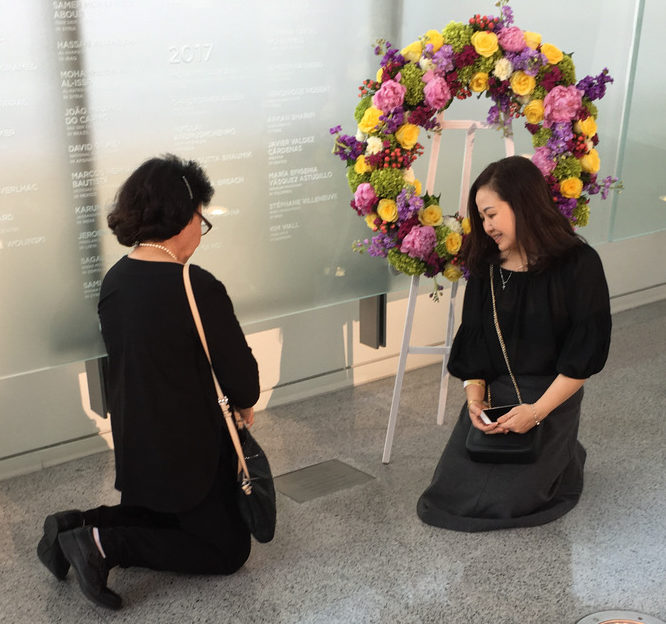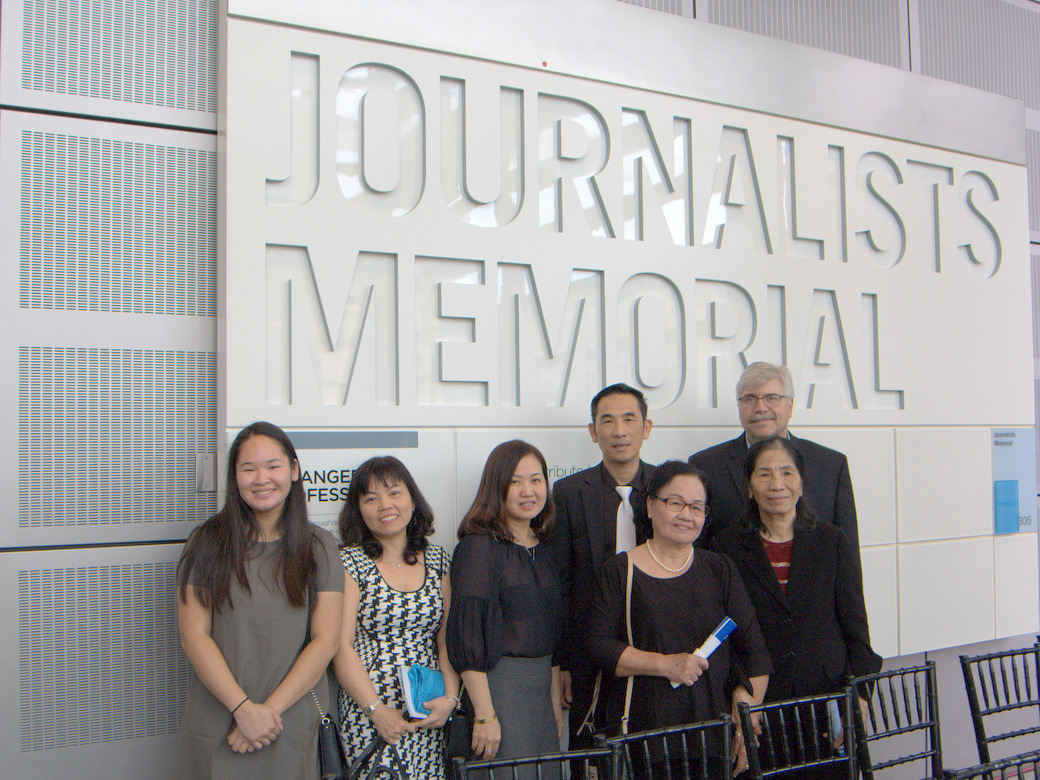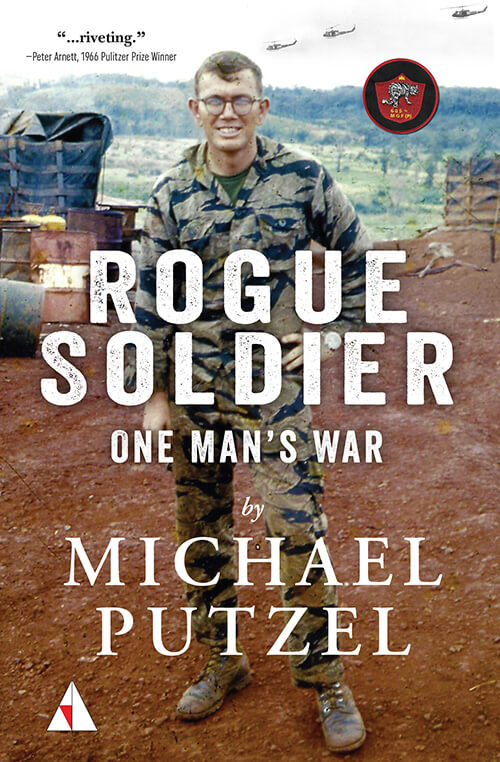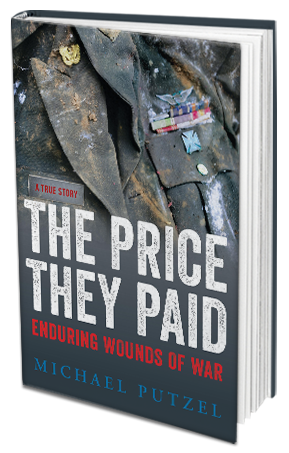Blog
47 years later, a widow and daughter get to say good-bye
Posted by Michael Putzel • June 06, 2018
WASHINGTON–After the ceremony ended and the crowd was gone, two women, dressed in black and facing each other, knelt in silence and bowed their heads at a plaque embedded in the polished stone floor of the Newseum’s Journalists Memorial in Washington. They were there to say farewell at last to an unheralded soldier-photographer killed in war almost a half century ago.

Photo by Michael Putzel
Vu Thuy, the younger woman, could not remember her father, a South Vietnamese combat photographer who saw her only twice, once soon after she was born and for the last time when she was 5 months old. He was on a helicopter flying over Laos on February 10, 1971, when the aircraft was shot down by North Vietnamese gunners, killing all 11 aboard, including four celebrated war photographers working for Western news organizations. The other woman on her knees was Thuy’s mother, Pham Thi Tin, a war widow who waited 37 years before learning what had happened to her husband.
He simply never came home after the war, which ended in South Vietnam’s defeat four years after the downing of his helicopter.
Thuy’s father, known as Tu Vu, was a sergeant in the South Vietnamese army assigned to the commander of his country’s northern, and most dangerous, region. When he took pictures he thought the outside world should see, he sent his film to the Saigon bureau of The Associated Press, which maintained a network of part-time “stringers” like Tu Vu. No one at the AP knew he left a young widow and infant daughter behind. In 2009, the AP learned from a Vietnamese friend of the Vu family living in the United States that Tu Vu had a wife and daughter still living near Ho Chi Minh City. The late Richard Pyle, a former AP bureau chief in Vietnam who participated in a successful mission to locate the crash site and recover a few remains years after the war, contacted Tin and Thuy and sent them a book entitled Lost Over Laos that he wrote about the lost photographers and the search for their crash site. The few human remains recovered were not traceable to individuals but were commingled and interred in the Newseum when it opened its Journalists Memorial in 2008. The plaque names the four news photographers and refers to seven other victims but doesn’t name Tu Vu or the two senior military officers and four crew members who died with them.
Upon learning her father’s remains were in the Newseum, Thuy quickly launched an effort to visit the site, but she was repeatedly denied a visa by the U.S. Consulate in Ho Chi Minh City. Earlier this year, the Newseum formally invited her and her immediate family to attend the June 4 rededication of the Journalists Memorial, when the names of journalists killed on assignment the previous year are added to the frosted glass panels of the soaring wall rising high above the floor. In early May, she and her mother received the long-sought travel documents and quickly arranged to travel halfway around the world to fulfill their mission.
There to meet them on Monday were John Daniszewski, AP’s vice president of standards; Russell Burrows, son of LIFE photographer Larry Burrows, who was aboard the doomed aircraft with Tu Vu; Richard Darnell of Edmond, Oklahoma, who was a U.S. Army captain assigned to the same headquarters as Tu Vu and a friend of the photographer; Patty Rhule, the Newseum exhibitions director who invited the family to attend; and several members of the Vu family who resettled in the United States after the war.

Photo by Michael Putzel






